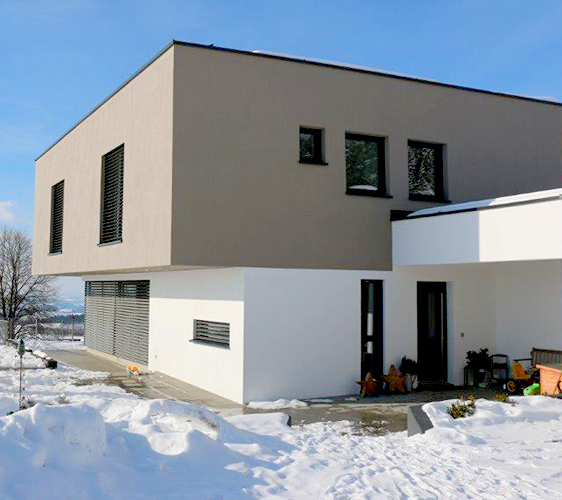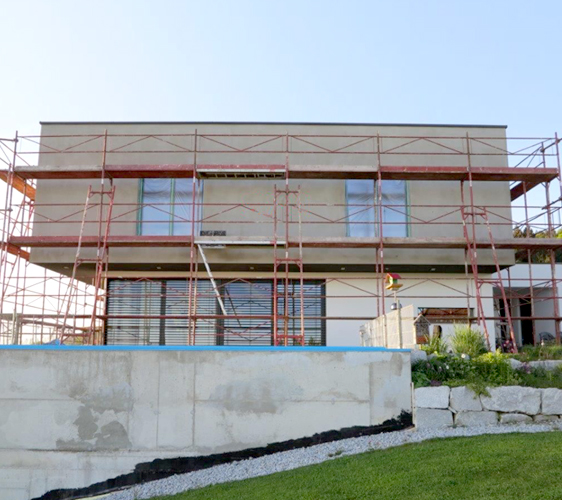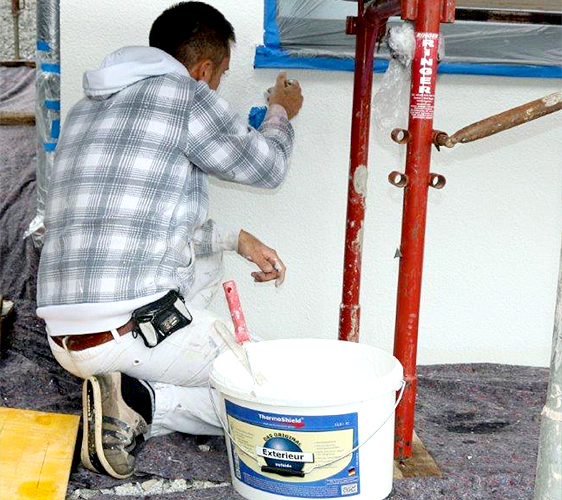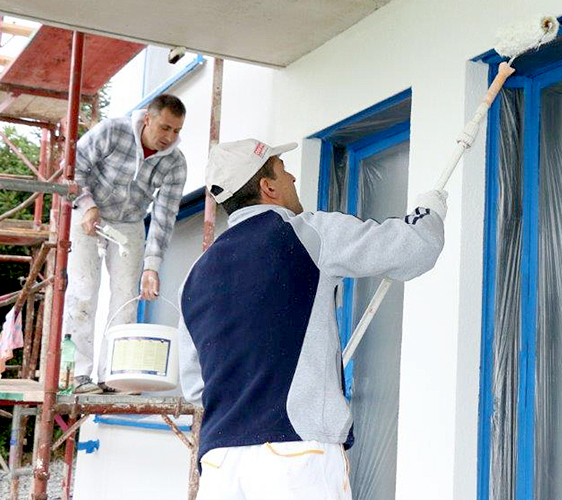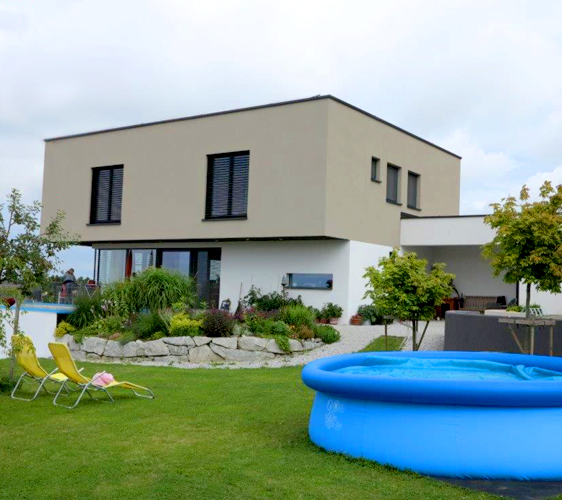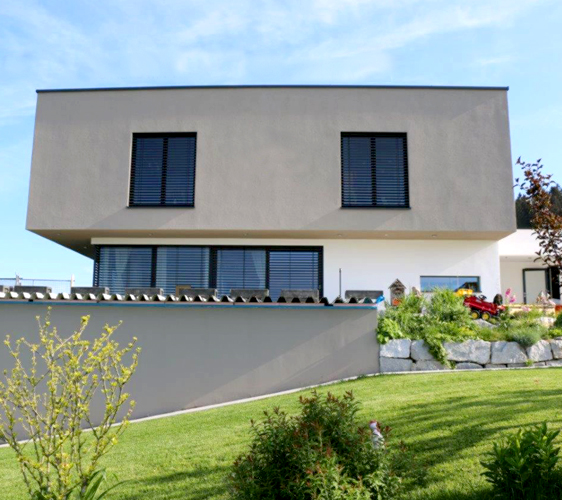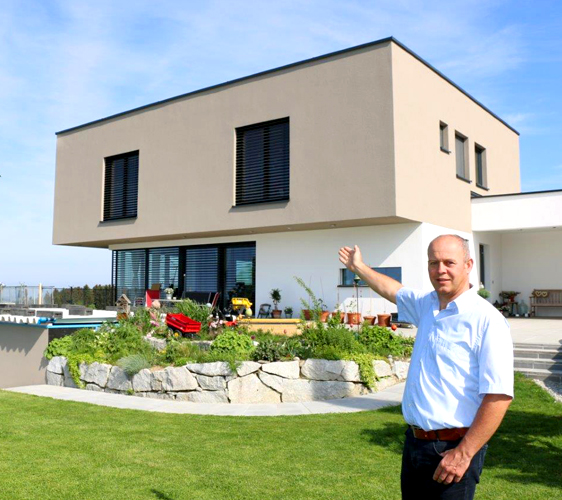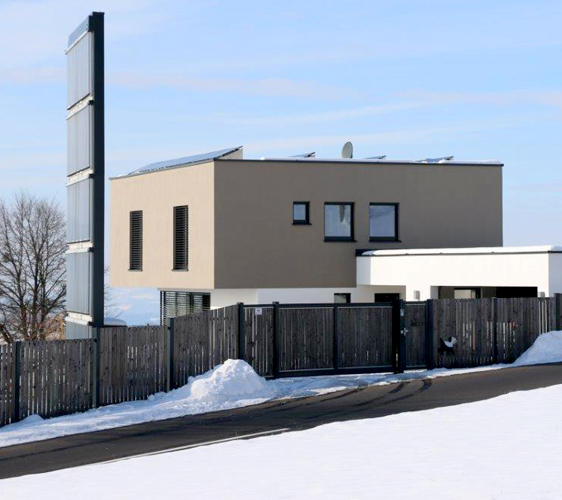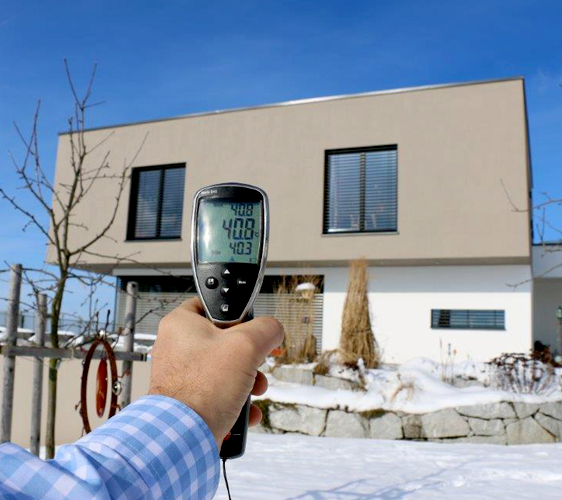Energy Master House
In this detached house, the combination of solid construction with ClimateCoating® ThermoProtect and infrared heating with ClimateCoating® ThermoPlus ensures an exemplary feel-good climate and outstanding energy efficiency. Measurement evaluations prove the effect of solar gains.
The energy master house is located in Eidenberg, Austria, at 683 m above sea level. It has 53 cm thick walls of 50 brick masonry, plastered inside and out. The exterior wall is coated with ClimateCoating® on the outside and inside, and the rooms are heated with a ceiling or infrared heating system. A detailed description is available on the website www.energiemaster.at.
The combination of a proven construction method with highly efficient systems and products creates a pleasant, comfortable indoor climate. The exterior wall coating reduces heat loss and protects against driving rain, among other things. The combination of IR-radiation heating and IR-reflective interior coating significantly reduces heating costs through improved thermal comfort.
The concept implemented here – apart from PV and solar thermal energy – does not really fit in with the theoretical distorted picture provided by some regulations on thermal insulation, including the associated calculations. However: nothing is more honest than practice. This is shown by the example of a measurement series evaluation of solar gains via the outer wall.
From 10:00 to 17:00 (the numbers are approximate), the effects of solar irradiance are seen from 09:00 to 15:00. Not only do solar gains occur through the transparent components (heat gains through the windows) – there are solar gains from the opaque components. The plastered brick wall is opaque (i.e. not transparent), it absorbs heat which is transported inwards. This is a flow of heat from the outside to the inside as a result of solar gains.
From 10:00 to 15:00 the temperature rises 10 cm below the surface. From 13:00 to 17:00, such a high thermal barrier (heat = temperature + material) is built up that the room temperature does not exceed the temperature of this barrier. Without a temperature gradient there is according to. First law of thermodynamics no heat flow. This means: no heat loss via the outer wall for 4 hours from 13:00.
For the U-value theory, one has set the storage fraction to 0 in Fourier’s heat conduction equation; not because it is so in practice, but so that the theory can be calculated: q = U (θi -θe).
The censored Wikipedia explains: “The definition equation assumes stationary conditions and is not suitable for calculating the respective instantaneous heat flux density q(t) at time-varying temperatures. For example, during a heating process, due to the heat storage capacity of the component, distortion effects occur which are not taken into account when attempting to calculate the surface heat flows using the equation. In the subsequent cooling process, however, the error occurs in the opposite sense. If heating and cooling are symmetrical to each other, the two errors cancel out.”
From this argumentation it is deduced that in the end it makes no difference whether the heat flow is considered stationary or transient. For this purpose, measurement graphics are shown where a transient case is simulated by means of modulated temperature. This is the appropriate measuring device for the theory, but the outer wall is exposed to a few more influencing variables than just the outside temperature.
Weather isn’t just about the temperature outside either. In addition, there is sometimes a large difference between arithmetic and geometric mean (average and median).
The graph for the evaluation of the measurement series explains this clearly: the heating process is faster, the cooling process is slower. This is illustrated by the slopes of the yellow and blue lines (no symmetry). This delay is due to the storage capacity. This means: energy gain. Thermo-Shield Exterior reduces energy losses via the façade and supports solar gains via the exterior wall (“endothermic effects”).
Downloads
Category
Residential building

